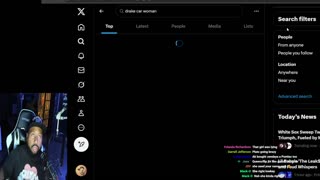Premium Only Content

The Illuminati Signal: Quantum Mechanics, Psychoanalysis, and the Architecture of Control
Science Fiction Author D Colin Palmer examines the idea of the Illuminati through the lens of quantum mechanics, theoretical physics, and psychoanalytic theory. This is not a cartoon version of secret societies, but a deeper look at how systems of influence might operate if they followed the same rules that govern particles, networks, and the unconscious mind.
The observer effect becomes narrative control, decoherence becomes the collapse of fragile possibilities into stable headlines, and entanglement becomes the eerie correlation between finance, politics, and media. The renormalization group shows how rules at the top shape patterns below, while gauge theory explains how invisible “phases” shift the way stories interfere.
From Freud to Lacan, psychoanalysis adds the missing human layer: projection, transference, and the superego as tools of self-policing. Desire is redirected, enemies become mirrors, and exhaustion is sold as freedom. The result is not a throne room but a protocol—measurement, framing, redundancy, and reward—that creates the appearance of omnipresent design.
This monologue is speculative, conspiratorial, and educational in spirit. It does not argue for or against a single secret council, but shows how science and psychology together explain why the Illuminati remains such a durable cultural symbol.
(Speculative analysis and commentary. This video is for thought and discussion only.)
-
 13:43
13:43
GritsGG
12 hours agoI Made a Brand New Warzone Account! Will I Get Bot Lobbies?
1.69K -
 1:09:23
1:09:23
The HotSeat
12 hours agoTrump’s Parade = Mocked, China’s Parade = Praised: Leftist Hypocrisy EXPOSED
26.1K33 -
 LIVE
LIVE
Lofi Girl
2 years agoSynthwave Radio 🌌 - beats to chill/game to
210 watching -
 4:34:26
4:34:26
Akademiks
6 hours agoICEMAN EPISODE 3
148K -
 2:04:10
2:04:10
Inverted World Live
8 hours agoThe Robots Are Here | Ep. 103
61.6K14 -
 1:21:53
1:21:53
Man in America
16 hours agoInflation, Debt & War: The 2032 Crash Cycle Is Here—Nations Will FALL w/ Martin Armstrong
58.1K20 -
 1:53:48
1:53:48
Adam Does Movies
15 hours ago $3.13 earnedTalking Movies + Ask Me Anything - LIVE
24.1K2 -
 2:55:43
2:55:43
TimcastIRL
8 hours agoTrump DOJ To Ban Trans People From Owning Guns After Catholic School Shooting | Timcast IRL
187K113 -
 3:21:36
3:21:36
The Quartering
7 hours agoBaldur's Gate 3 First Playthrough!
50K8 -
 6:34:42
6:34:42
Rallied
9 hours ago $9.03 earnedWarzone Solo Challenges
80K2